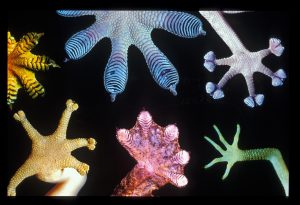Biomimicry is the use of methods in economy which mimic natural processes. Thus to reduce waste of and avoid impact on the environment.The Biomimicry Institute defines it like this:
“Biomimicry is an approach to innovation that seeks sustainable solutions to human challenges by emulating nature’s time-tested patterns and strategies.”
http://www.designatlarge.it/biomimicry-design-and-innovation/?lang=en
Nature consists of proven concepts that developed over millions of years. Beginning with the most simple single cell organisms to the massive static solution of the enormous Redwood tree nature presents us with the best solutions – as well in economical as in ecological terms.
The concept of biomimicry is long know, but not often enough in use.
In our consume driven society we don’t think about our waste management and about what happens with our products after we used them. Most products are composed of many different materials that are hard to separate after combining them and composite like plastics, etc. are hardly degradable at all.
A natural result of our wasteful uneconomic lifestyle are more and more frequently occurring climate phenomena, that are supposed to be seen as a signal to change our way of living. Climate change and lack of resources will finally force us to rethink our ways of living and consumption, and eventually change our habits.
For a solutions to our problems we ought to look around us and seek guidance by the greatest prototyper we have, nature. Well proven concepts are all around us we only have to observe and adapt our ways of designing and manufacturing to natural principles.
“When we look at what is truly sustainable, the only real model that has worked over long periods of time is the natural world.”
-Janine Benyus
Sources:
https://biomimicry.org/what-is-biomimicry/
http://www.designatlarge.it/biomimicry-design-and-innovation/?lang=en
